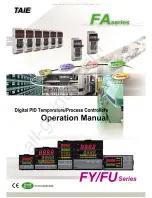
DS271PP3
59
CS8900A
Crystal LAN™ ISA Ethernet Controller
CIRRUS LOGIC PRODUCT DATA SHEET
4.4.12 Register B: Buffer Configuration
(BufCFG, Read/Write, Address: PacketPage base + 010Ah)
Each bit in BufCFG is an interrupt enable. When set, the interrupt described below is enabled. When clear, there is
no interrupt.
001011
These bits provide an internal address used by the CS8900A to identify this as the Buffer Con-
figuration Register.
SWint-X
When set, there is an interrupt requested by the host software. The CS8900A provides the in-
terrupt, and sets the SWint (Register C, BufEvent, Bit 6) bit. The CS8900A acts upon this com-
mand at once. SWint-X is an Act-Once bit. To generate another interrupt, rewrite a "1" to this bit.
RxDMAiE
When set, there is an interrupt when a frame has been received and DMA is complete. With
this interrupt, the RxDMAFrame bit (Register C, BufEvent, Bit 7) is set.
Rdy4TxiE
When set, there is an interrupt when the CS8900A is ready to accept a frame from the host for
transmission. (See Section 5.7 on page 99 for a description of the transmit bid process.)
TxUnderruniE
When set, there is an interrupt if the CS8900A runs out of data before it reaches the end of the
frame (called a transmit underrun). When this happens, event bit TXUnderrun (Register C,
BufEvent, Bit 9) is set and the CS8900A makes no further attempts to transmit that frame. If the
host still wants to transmit that particular frame, the host must go through the transmit request
process again.
RxMissiE
When set, there is an interrupt if one or more received frames is lost due to slow movement of
receive data out of the receive buffer (called a receive miss). When this happens, the RxMiss
bit (Register C, BufEvent, Bit A) is set.
Rx128iE
When set, there is an interrupt after the first 128 bytes of a frame have been received. This al-
lows a host processor to examine the Destination Address, Source Address, Length, Sequence
Number, and other information before the entire frame is received. This interrupt should not be
used with DMA. Thus, if either AutoRxDMA (Register 3, RxCFG, Bit A) or RxDMAonly (Register
3, RxCFG, Bit 9) is set, the Rx128iE bit must be clear.
TxColOvfiE
If set, there is an interrupt when the TxCOL counter increments from 1FFh to 200h. (The TxCOL
counter (Register 18) is incremented whenever the CS8900A sees that the RXD+/RXD- pins
(10BASE-T) or the CI+/CI- pins (AUI) go active while a packet is being transmitted.)
MissOvfloiE
If MissOvfloiE is set, there is an interrupt when the RxMISS counter increments from 1FFh to
200h. (A receive miss is said to have occurred if packets are lost due to slow movement of re-
ceive data out of the receive buffers. When this happens, the RxMiss bit (Register C, BufEvent,
Bit A) is set, and the RxMISS counter (Register 10) is incremented.)
RxDestiE
When set, there is an interrupt when a receive frame passes the Destination Address filter cri-
teria defined in the RxCTL register (Register 5). This bit provides an early indication of an in-
coming frame. It is earlier than Rx128 (Register C, BufEvent, Bit B). If RxDestiE is set, the
BufEvent could be RxDest or Rx128. After 128 bytes are received, the BufEvent changes from
RxDest to Rx128.
After reset, if no EEPROM is found by the CS8900A, then the register has the following initial state after reset. If an
EEPROM is found, then the register’s initial value may be set by the EEPROM. See Section 3.3 on page 19.
Reset value is: 0000 0000 0000 1011
7
6
5
4
3
2
1
0
RxDMAiE
SWint-X
001011
F
E
D
C
B
A
9
8
RxDestiE
Miss OvfloiE
TxCol OvfloiE
Rx128iE
RxMissiE
TxUnder runtiE
Rdy4TxiE
Содержание Crystal LAN CS8900A
Страница 127: ... Notes ...















































